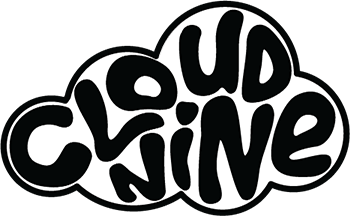What is THC? a Deep Dive into Cannabis's Powerful Effects

Table of Contents
I always get asked what is THC? And what does it do? In recent years, the compound delta-9-tetrahydrocannabinol (THC) found in cannabis has gained significant attention for its potential therapeutic benefits and impact on the human body and mind. As the primary psychoactive ingredient in marijuana, THC possesses powerful effects that have sparked a surge of interest.
This article aims to provide a comprehensive exploration of what is THC, delving into its chemical properties, interaction with the endocannabinoid system, various medical benefits and risks, consumption methods, addiction potential, legal status, and social impact.
The Science Behind What is THC: Understanding Its Chemical Structure and Interaction with Receptors
What is THC? The chemical structure of THC, a psychoactive compound found in cannabis, plays a crucial role in its interaction with receptors in the brain and body.
It has a molecular formula of C21H30O2 and a molecular weight of 314.46 g/mol. Its chemical structure consists of a cyclohexene ring with a double bond and a side chain with a methyl group.
This structure allows it to bind to and activate specific receptors in the brain, known as CB1 receptors. CB1 receptors are primarily found in the brain and central nervous system and play a key role in regulating neurotransmitter release and synaptic plasticity. Activation of CB1 receptors by THC inhibits the release of neurotransmitters, affecting mood and cognition.
It also has the ability to bind to CB2 receptors, primarily found in immune cells and peripheral tissues, which may contribute to its anti-inflammatory and analgesic effects.
Understanding what is THC and the chemical structure provides insight into its unique interactions with the endocannabinoid system and its potential effects on the body.
Exploring the Endocannabinoid System: How it Activates CB1 and CB2 Receptors
Exploring the activation mechanism of CB1 and CB2 receptors by THC provides valuable insights into the intricate workings of the endocannabinoid system. To find out what is THC, you need to understand these things.
The endocannabinoid system, consisting of CB1 and CB2 receptors, plays a crucial role in regulating various physiological processes. THC, the primary psychoactive compound in cannabis, interacts with these receptors, leading to its psychoactive effects.
CB1 receptors are primarily found in the brain and central nervous system, while CB2 receptors are primarily found in immune cells and peripheral tissues. It activates CB1 receptors in the brain, inhibiting the release of neurotransmitters and affecting mood and cognition. Additionally, it can also bind to CB2 receptors, potentially contributing to its anti-inflammatory and analgesic effects.
Understanding the activation mechanism of these receptors is the perfect way to find out what is THC. This provides valuable information for the development of therapeutic interventions targeting the endocannabinoid system. Further research in this area may lead to new treatments for various conditions, such as pain management and inflammation.
Unraveling the Medical Benefits of THC: From Pain Relief to Mood Enhancement
What is THC in regards to medical benefits? Unraveling the medical benefits of THC has revealed its potential for providing pain relief and enhancing mood, making it a promising avenue for therapeutic interventions.
THC, or delta-9-tetrahydrocannabinol, is the primary psychoactive compound found in cannabis. When consumed, it interacts with receptors in the brain and body, activating CB1 receptors in the brain and CB2 receptors in immune cells and peripheral tissues. This interaction leads to the production of psychoactive effects and potential benefits such as reducing chronic pain, stimulating appetite, and improving mood.
However, it is important to note that it can also have negative effects, including addiction, withdrawal symptoms, and an increased risk of mental health issues. Safe and effective use of THC involves starting with a low dose, using in a controlled environment, and seeking guidance from healthcare professionals.
Overall, the medical potential of THC warrants further research and exploration.

The Risks of Use: Addiction, Mental Health, and Potential Harm During Pregnancy
What are the potential risks associated with THC use, including addiction, mental health issues, and harm to unborn babies during pregnancy? When asking what is THC, you also need to understand the potential negatives.
THC, the primary psychoactive compound in cannabis, poses several risks to individuals who use it. One of the major concerns is the potential for addiction. Regular and heavy use of THC-containing products can lead to psychological dependence and withdrawal symptoms upon cessation.
Additionally, THC use is associated with an increased risk of mental health issues such as anxiety, depression, and psychosis.
It is important to note that using THC during pregnancy can also have harmful effects on unborn babies. Studies have shown that THC exposure during pregnancy can lead to developmental issues and may have long-lasting effects on the child’s cognitive and behavioral development.
It is crucial for individuals considering what is THC to be aware of these potential risks and make informed decisions.
A Guide to Consumption Methods: Edibles, Tinctures, Smoking, and Vaping
There are four primary THC consumption methods that individuals can choose from: edibles, tinctures, smoking, and vaping.
Cannabis edibles are a popular method of cannabis consumption and come in various forms such as gummies and baked goods. They provide a discreet and long-lasting effect, but the onset of effects can be delayed.
Tinctures and oils are concentrated liquid forms of cannabis extract that can be ingested orally or added to food and beverages. They offer precise dosage control and faster onset of effects compared to edibles.
Smoking it is commonly done using joints, blunts, pipes, bongs, or bubblers. It provides immediate effects but may have adverse effects on respiratory health.
Vaping it involves heating cannabis oil or flowers at a lower temperature, delivering a smoother and potentially less harmful inhalation experience.
Each method of consumption has its own advantages and considerations, and individuals should choose the one that best suits their preferences and needs.
Understanding THC Addiction and Substance Use Disorder: Myths and Realities
While there is ongoing debate over the nature of cannabis addiction, it is crucial to examine the myths and realities surrounding THC addiction and substance use disorder. You wanted to know what is THC, and this is it.
THC, or delta-9-tetrahydrocannabinol, is the primary psychoactive compound found in cannabis. It interacts with receptors in the brain and body, producing psychoactive effects. While it can be addictive and cause withdrawal symptoms, there is a debate over whether it is a genuine addiction due to the absence of physical withdrawal symptoms.
Substance use disorder (SUD) encompasses addiction to various substances, including THC. Treatment for addiction and SUD may involve therapy, medication, and support groups.
Understanding the true nature of addiction and SUD is essential for developing effective strategies for prevention, intervention, and treatment.
The Legalization Movement: From Prohibition to Social Impact
What is THC? Is it legal or illegal in Thailand? The legalization movement, spearheaded by advocates and policymakers, aims to transform the societal impact of cannabis by shifting from prohibition to regulated access and social justice.
The movement recognizes the failures of the prohibition era, which led to the criminalization of marginalized communities and hindered scientific research into the potential medical benefits of cannabis.
By legalizing cannabis, countries can reduce crime, generate tax revenue, and provide regulated access to cannabis products for both medical and recreational use.
Furthermore, legalization can address social justice issues by ending the disproportionate targeting and incarceration of minority communities for cannabis-related offenses.
The legalization movement seeks to create a more equitable and inclusive society by dismantling the historical barriers that have stigmatized cannabis and its users.
What is THC? The Historical Context and Current Calls for Reform
In light of the historical context surrounding what is THC, there is a pressing need for reform as society grapples with the current calls for change. The historical narrative of cannabis prohibition, fueled by politics, racism, and public health concerns, has had a significant impact on society. It has led to the criminalization of marginalized communities and hindered research into the medical benefits of cannabis.
However, there is now a growing movement to reform cannabis laws for public health and social justice. Many countries have decriminalized cannabis possession or legalized it for medical use, recognizing the potential benefits and the need for regulation. Legalization can reduce crime, generate tax revenue, and provide regulated access to cannabis products.
As society continues to evolve, it is crucial to engage in open and informed discussions to shape a responsible and equitable approach to it.
Navigating Safe and Responsible THC Use: Tips for Effective Dosing and Harm Reduction
Effectively navigating safe and responsible use requires diligent adherence to proper dosing and harm reduction techniques.
As THC, the primary psychoactive compound found in cannabis, continues to gain popularity for its potential medical benefits and recreational use, it is crucial to understand how to use it responsibly.
Proper dosing involves starting with a low dose and gradually increasing it to find the desired effects without going overboard.
Harm reduction techniques include using in a safe environment, avoiding overuse or frequent use, and consulting with a healthcare provider for guidance.
Additionally, it is essential to be aware of the potential risks associated with its use, such as addiction, mental health issues, and harm to the fetus or infant during pregnancy and breastfeeding. Learning about what is THC is a complicated affair.
Final Thoughts
In conclusion to answering the question what is THC, this article has provided a comprehensive exploration of the substance. It has shed light on its chemical properties, its interaction with the endocannabinoid system, and its various medical benefits and risks.
The article has also delved into the different forms of THC consumption and the potential consequences of addiction and substance use disorder.
Furthermore, it has touched upon the legal status of cannabis and the social impact of its prohibition.
By delving into these topics, this article has offered readers a deeper understanding of its effects. It has contributed to the ongoing discourse surrounding cannabis and its potential as a medicinal substance.


